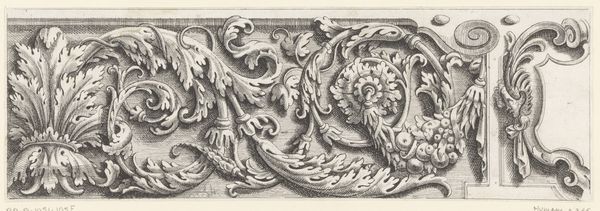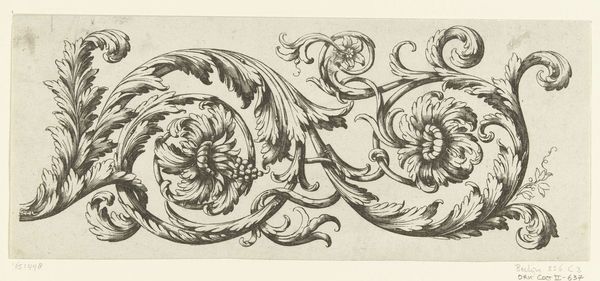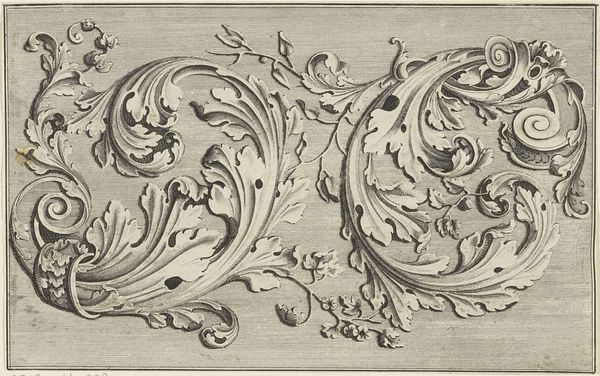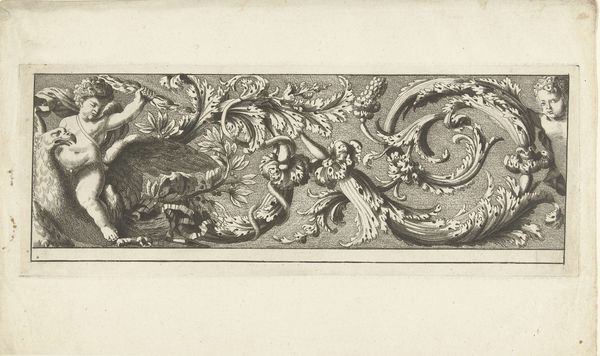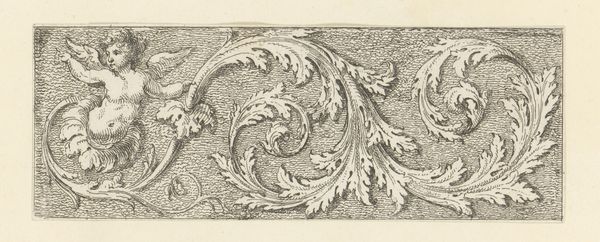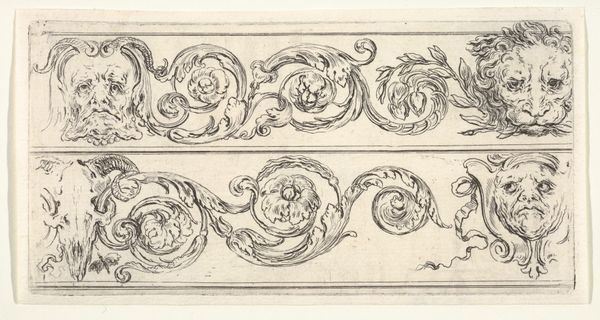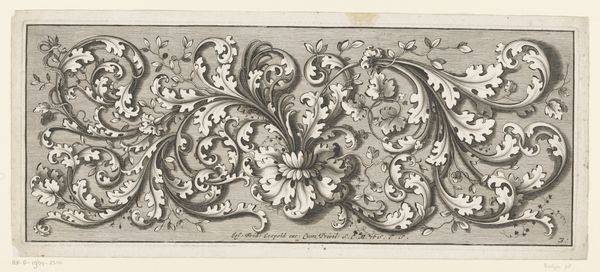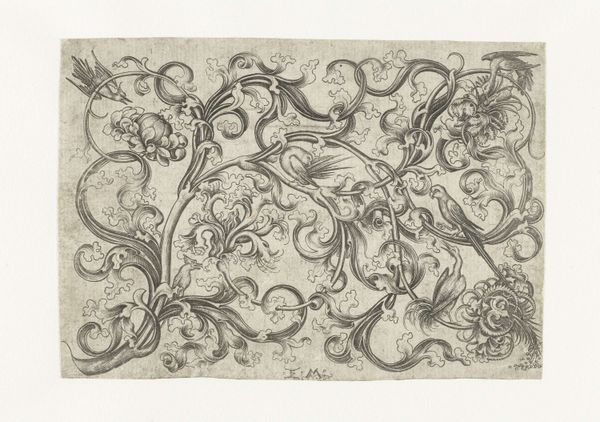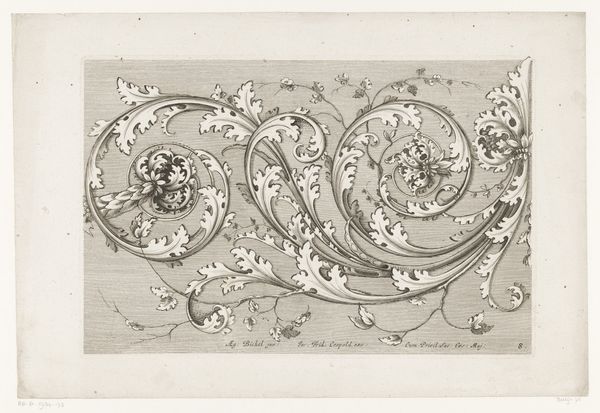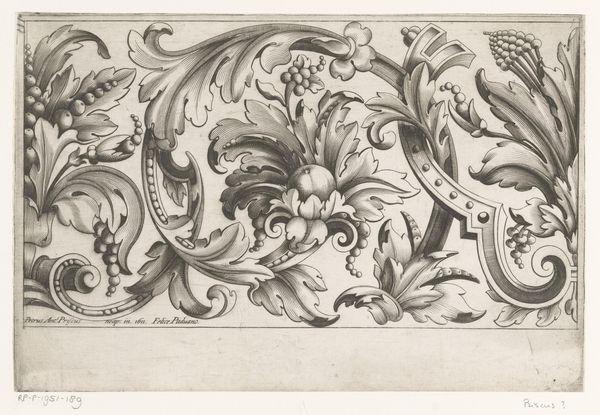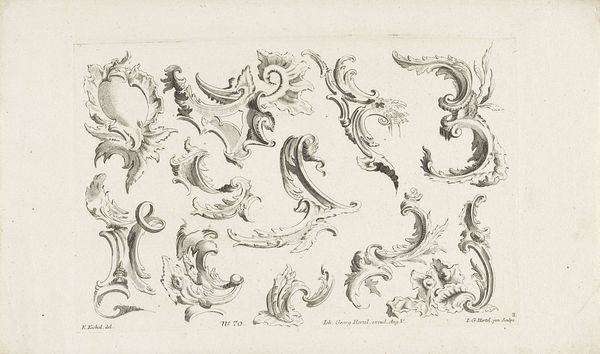
drawing, ink
#
drawing
#
allegory
#
baroque
#
pen drawing
#
figuration
#
ink line art
#
ink
#
line
Dimensions: height 158 mm, width 375 mm
Copyright: Rijks Museum: Open Domain
Editor: Here we have "Fries met bladrank die uitloopt in kind," or "Frieze with leafy tendril ending in a child," made in 1651 by René Lochon. It's an ink drawing. I’m struck by how this ornamentation almost seems to grow organically, morphing into this rather unsettling child-figure at the end. What do you make of this piece? Curator: It's fascinating how Lochon uses the decorative language of the Baroque to, perhaps, subvert expectations. These lush, flowing vegetal forms are typical, but the figure of the child emerging from them, holding a snake, feels… charged. The snake, in particular, brings forth questions of what type of knowledge is symbolized within, potentially harmful or enlightening. Where do you think the placement of the figure at the far right takes the work? Editor: I see what you mean about subversion. The child and snake definitely disrupt the pure ornamentation. Placing it on the right gives it a sense of conclusion, like the tendril's growth culminates in this strange being. But what's the overall message, the relationship between ornamentation, nature, and childhood? Curator: Think about the historical context: the Baroque period, with its emphasis on display and power, but also the rise of scientific inquiry. Is Lochon commenting on the way knowledge itself grows, sometimes monstrously, from the seemingly innocent tendrils of natural philosophy? Is this child an allegorical figure of knowledge gained from nature? The image exists as a tension point between innocence and experience. Editor: That’s a compelling thought. The knowledge gained through nature – but twisted or perhaps misunderstood? I hadn't considered the connection to the period's scientific advancements. Curator: Exactly. And consider, too, the vulnerability of childhood. Placing a child as a representation of dangerous knowledge invites us to consider our responsibilities for creating harmful outcomes with our curiosities and our knowledge. What would be your final reflection on the figure of the child at the point of culmination? Editor: Thinking about the child as dangerous knowledge feels very relevant today, and gives the image new layers. Curator: Indeed. By looking at art through lenses of historical and social context, we open ourselves to powerful conversations.
Comments
No comments
Be the first to comment and join the conversation on the ultimate creative platform.
